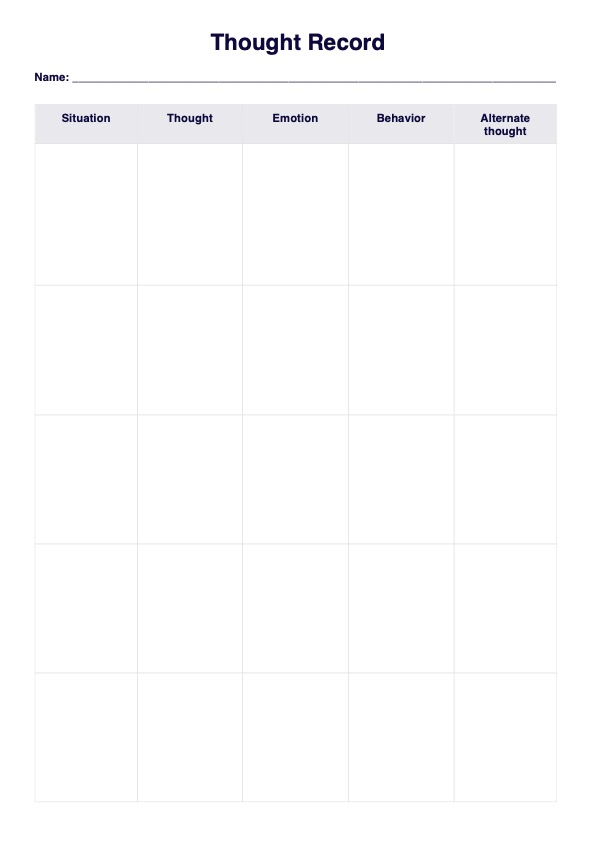A Thought Record Template is a handy tool therapists use to help clients recognize and challenge negative emotions and thinking patterns that may affect their overall well-being.

Thought Record Template
Gain a more comprehensive understanding of how clients process their thoughts by using our thought record template. This tool provides a structured approach to exploring thoughts and feelings, helping you chart potential triggers in an easy-to-understand format.
Thought Record Template Template
Commonly asked questions
Thought Record Template can be used in various contexts to help individuals better understand how their thoughts and emotions shape their responses to different situations. This template is used for mental health interventions such as treating anxiety or depression, but it can also be beneficial for personal growth and development.
Mental health professionals such as therapists, psychiatrists, and psychologists typically use this type of template as part of their clinical practice for assessment purposes.
EHR and practice management software
Get started for free
*No credit card required
Free
$0/usd
Unlimited clients
Telehealth
1GB of storage
Client portal text
Automated billing and online payments











